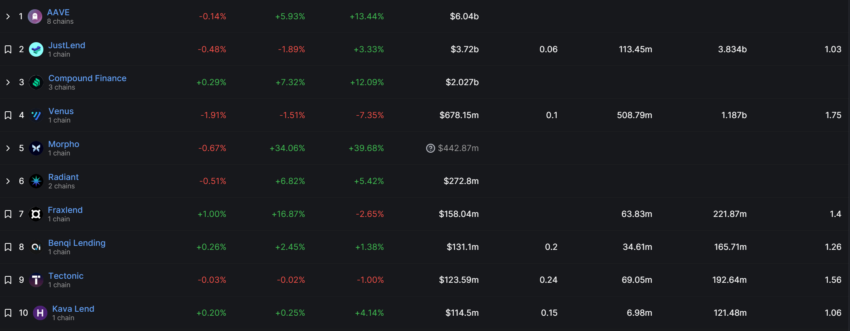
[ad_1]
As cryptocurrency markets grow, more people are exploring how to replace traditional financial products with crypto and adjacent technologies. Some cryptocurrency holders also want to find ways to make their funds work for them, rather than just letting them sit unused in a wallet.
Perhaps the best-known examples of crypto lending come from decentralized finance (DeFi) protocols, Aave and Compound. Like its competitors, Aave, the most popular crypto lending platform, operates differently from traditional lending.
Crypto Lending vs. Traditional Lending
Instead of relying on banks, Aave uses smart contracts to facilitate lending and borrowing. In this system, borrowers provide collateral, typically in the form of cryptocurrency tokens, and receive loans from other individuals.

Most of Aave’s loans, like many other DeFi loans, require users to overcollateralize. This means users must deposit cryptocurrency worth more than the borrowed amount. This safeguards lenders from defaults and losses.
Crypto loans may have limited value for borrowers with limited liquidity. Despite this, they have proved incredibly popular.
Currently, DefiLlama lists 247 DeFi protocols offering lending services, a number that has exploded in less than a handful of years.
Bitget Enters the Market
On Tuesday, the crypto exchange Bitget became the latest to enter the industry with its new Crypto Loans product. Bitget’s new offering uses a dual-coin system where users stake one coin as collateral to borrow an equivalent amount in another coin.
The loan comes with an interest rate to repay, and the borrowed amount is based on the market value of the collateral. Users have a predetermined period to repay the loan, and they can choose to do so before or at the specified deadline. Bitget is a centralized exchange, hence its loans are not an example of decentralized finance.
Bitget’s entry looks like a wise business move. According to Global Market Insights, the market for digital lending platforms surpassed $8.5 billion USD in 2022. Its compound annual growth (CAGR) is expected to hit 20.5% from 2023 to 2032.
In recent months, digital asset lending became a lot more popular with NFTs. After finding success with its professional-level NFT trading platform, Blur released its lending platform, Blend, on May 1.
According to a report by Nansen, Blend facilitated over 15,800 loans totaling 123,500 ETH ($224.4 million) in under a month.
Disclaimer
In adherence to the Trust Project guidelines, BeInCrypto is committed to unbiased, transparent reporting. This news article aims to provide accurate, timely information. However, readers are advised to verify facts independently and consult with a professional before making any decisions based on this content.
[ad_2]
Source link




